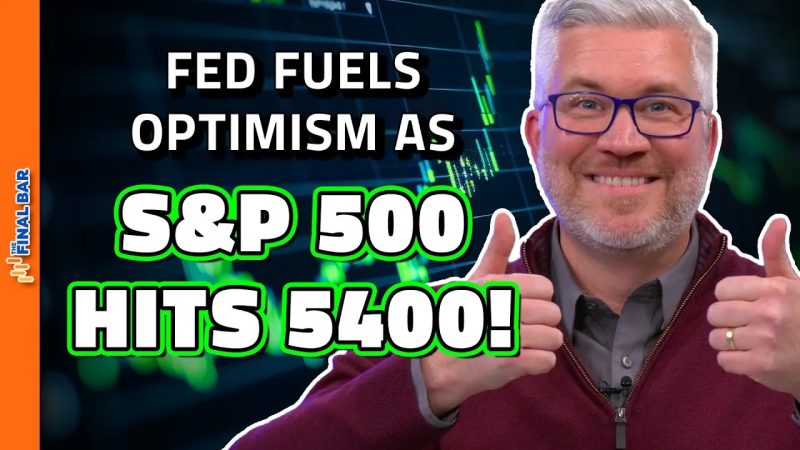The current bull market has seen the S&P 500 surpass the 5400 mark, sparking discussions around whether this growth is rooted in economic optimism or driven by irrational exuberance. While some observers view the market’s momentum as indicative of underlying economic strength and a positive outlook, others caution that such rapid growth may be unsustainable and detached from reality.
Proponents of the economic optimism camp highlight several key factors supporting the S&P 500’s rise. Strong corporate earnings, robust job market data, and positive economic indicators have fueled investor confidence in the resilience of the economy. The Federal Reserve’s accommodative monetary policy and ongoing fiscal stimulus measures have also provided support to equity markets, contributing to the bullish sentiment among market participants.
Moreover, the rapid pace of technological innovation and digital transformation has propelled growth in sectors such as tech, healthcare, and renewable energy. These industries have driven significant gains in market capitalization, attracting both institutional and retail investors seeking exposure to high-growth opportunities.
On the other hand, skeptics warn of the dangers of irrational exuberance driving the market to unsustainable heights. Concerns around inflated asset valuations, speculative trading behaviors, and the potential for a market correction loom large in the current environment. The disconnect between stock prices and economic fundamentals, coupled with elevated levels of market volatility, has raised alarms about the sustainability of the market rally.
Moreover, geopolitical uncertainties, rising inflationary pressures, and the looming threat of interest rate hikes pose significant risks to the market’s upward trajectory. A sudden shift in investor sentiment or an unforeseen external shock could trigger a sharp selloff, leading to a potential market downturn and eroding investor wealth.
As investors navigate the complex interplay of economic optimism and irrational exuberance in the current market environment, it is crucial to maintain a diversified portfolio, exercise caution in evaluating investment opportunities, and stay informed about market dynamics. While economic indicators may point to a positive outlook, it is essential to remain vigilant and prepared for potential market volatility and downside risks.
In conclusion, the debate on whether the S&P 500’s surge above 5400 is driven by economic optimism or irrational exuberance underscores the nuanced nature of financial markets. While positive economic signals lend support to the market’s upward trajectory, caution is warranted to avoid falling prey to speculative fervor and potential market pitfalls. By staying informed, maintaining a disciplined investment approach, and adapting to changing market conditions, investors can navigate the complexities of the current market environment with prudence and resilience.
